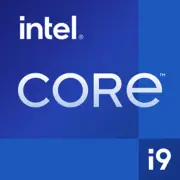Intel Core i9-7980XE Extreme Edition

Intel Core i9-7980XE Extreme Edition: Guida al leggendario mostro a 18 core (2025)
Data di aggiornamento: aprile 2025
Caratteristiche principali: Architettura, processo tecnologico e peculiarità uniche
Il processore Intel Core i9-7980XE, rilasciato nel 2017, rimane una soluzione iconica per gli appassionati. Nonostante la sua età, i suoi 18 core e 36 thread sono ancora rilevanti per compiti specifici.
Architettura e processo tecnologico
- Nome in codice: Skylake-X.
- Processo tecnologico: 14 nm (versione ottimizzata Intel 14nm++).
- Frequenza base: 2.6 GHz, con Turbo Boost fino a 4.4 GHz (Turbo Boost Max 3.0).
- Cache: 24.75 MB L3, 1 MB L2 per core.
Caratteristiche principali
- Moltiplicatore sbloccato per l'overclocking manuale.
- Supporto per Intel Optane Memory e AVX-512 per carichi di lavoro intensivi.
- 44 linee PCIe 3.0 — possibilità di collegare più GPU e unità NVMe.
Prestazioni
Nei test di Cinebench R23, il 7980XE dimostra circa 3400 punti in modalità single-thread e fino a 32000 in multi-thread. A titolo di confronto, il moderno Core i9-14900K (24 core) raggiunge circa 28000 punti in multi-thread, ma vince nelle attività single-thread grazie a frequenze fino a 6 GHz.
Schede madri compatibili: Socket, chipset e dettagli di scelta
Socket: LGA 2066 — piattaforma specializzata per HEDT (High-End Desktop).
Chipset
- Intel X299: L'unica opzione. Supporta overclocking, configurazioni GPU multi-thread (NVLink/SLI) e fino a 128 GB di DDR4.
Modelli consigliati
- ASUS ROG Rampage VI Extreme — scelta per overclockers (prezzo nel 2025: ~$450 per una nuova, se la trovate).
- MSI X299 Gaming Pro Carbon AC — buon rapporto qualità-prezzo (~$300).
Dettagli di scelta
- Modulo VRM: Almeno 8 fasi per un overclocking stabile.
- Raffreddamento VRM: Radiatori con heatpipe sono indispensabili — il chipset si scalda sotto carico.
- Porte: Cercate schede con USB 3.2 Gen2, Thunderbolt 3 (tramite controller aggiuntivo) e 2-3 slot M.2.
Memoria supportata: DDR4 e limitazioni
- Tipo: Solo DDR4 (DDR5 non supportato).
- Frequenze: Ufficialmente fino a 2666 MHz, ma con overclocking — fino a 3600 MHz (dipende dalla scheda e dai chip di memoria).
- Configurazioni: Modalità a 4 o 8 canali (su gran parte delle X299 — a 4 canali).
Esempio pratico
Un'assemblaggio basato su G.Skill Trident Z RGB (4x16 GB, 3200 MHz) mostra un incremento nel rendering fino al 12% rispetto a 2666 MHz.
Alimentatori: Calcolo della potenza e raccomandazioni
TDP del processore: 165 W, ma con overclocking (fino a 4.6 GHz su tutti i core) il consumo arriva a 300 W.
Raccomandazioni
- Minimo: 850 W (per PC con una sola scheda grafica di livello RTX 4080).
- Ottimale: 1000–1200 W (per 2x GPU, array RAID e periferiche).
- Certificazioni: 80+ Gold o Platinum (Corsair HX1200, Seasonic PRIME TX-1000).
Importante! Alimentatori economici con alta ondulazione possono causare malfunzionamenti sotto carichi multi-thread.
Pro e contro dell'i9-7980XE
Pro
1. Potenza multi-thread: 36 thread sono rilevanti per rendering, compilazione di codice, virtualizzazione.
2. Scalabilità: Supporto per memoria a 4 canali e 44 linee PCIe 3.0.
3. Potenziale di overclocking: Gli esperti riescono a spingerlo fino a 4.8 GHz con azoto liquido.
Contro
1. Consumo energetico: Con l'overclocking, il sistema assorbe fino a 500 W.
2. Piattaforma obsoleta: Nessun PCIe 4.0/5.0, DDR5, USB4.
3. Prezzo: Nuovi esemplari nel 2025 costano $1500–2000 (se si trovano).
Scenari di utilizzo: Dove l'i9-7980XE brilla ancora
1. Workstation
- Rendering 3D (Blender, V-Ray): 18 core riducono i tempi di rendering di scene complesse.
- Editing video 8K: In Premiere Pro e DaVinci Resolve, il processore gestisce la codifica dei proxy in background.
2. Virtualizzazione
Esecuzione di 5-7 macchine virtuali simultaneamente senza ritardi (esempio: sviluppo software in ambienti isolati).
3. Gaming
- Streaming: La codifica su CPU in OBS influisce poco sui FPS.
- Giochi focalizzati sul multi-thread (Civilization VI, Microsoft Flight Simulator 2024) — stabili 60+ FPS in 4K.
Ma! In CS2 o Cyberpunk 2077 con RTX 4090, perde contro il moderno Core i9-14900K del 15-20% a causa del basso IPC (istruzioni per ciclo).
Concorrenti: Con chi confrontare nel 2025?
1. AMD Ryzen Threadripper 1950X (2017): 16 core, ~$1000. Perde nella multi-threading (~25000 in Cinebench R23), ma è più economico.
2. AMD Threadripper 3970X (2019): 32 core, ma parte da $2000. Per chi cerca la massima performance.
3. Intel Core i9-13900KS (2023): 24 core (8P+16E), IPC superiore, ma socket LGA 1700 limitato.
Conclusione: il 7980XE è la scelta per chi già possiede una scheda X299 e vuole un upgrade senza cambiare piattaforma.
Suggerimenti per il montaggio
1. Raffreddamento
- Sistemi a liquido: Arctic Liquid Freezer II 420 (radiatore da 420 mm).
- Aria: Noctua NH-D15 (con supporto modificato per LGA 2066).
2. Case
- Minimo: Lian Li PC-O11 Dynamic (buona ventilazione).
- Ideale: Thermaltake Core WP100 (supporto E-ATX e sistemi a liquido).
3. Accessori
- Pasta termica Thermal Grizzly Kryonaut.
- Ventole aggiuntive per raffreddare il VRM.
Conclusione finale: A chi si adatta l'i9-7980XE nel 2025?
Questo processore è da considerare se:
- Avete già una scheda X299 e cercate un upgrade senza cambiare scheda madre.
- Lavorate con applicazioni multi-thread e non siete pronti a passare a DDR5/PCIe 5.0.
- Volete un raro PC HEDT "old school" per esperimenti.
Per i gamer e gli utenti normali, la scelta non è ottimale: i moderni Core i7/i9 della 13a e 14a generazione e i Ryzen 7000/8000 offrono una migliore efficienza energetica e velocità single-thread.
Se trovate un nuovo i9-7980XE nel 2025 — è un rarità. Ma per compiti di nicchia, continua a sorprendere con la sua potenza, ricordando l'era in cui Intel dominava il segmento HEDT.
Di base
Specifiche della CPU
Specifiche della memoria
Varie
Condividi sui social media
Oppure linkaci
<a href="https://cputronic.com/it/cpu/intel-core-i9-7980xe-extreme-edition" target="_blank">Intel Core i9-7980XE Extreme Edition</a>